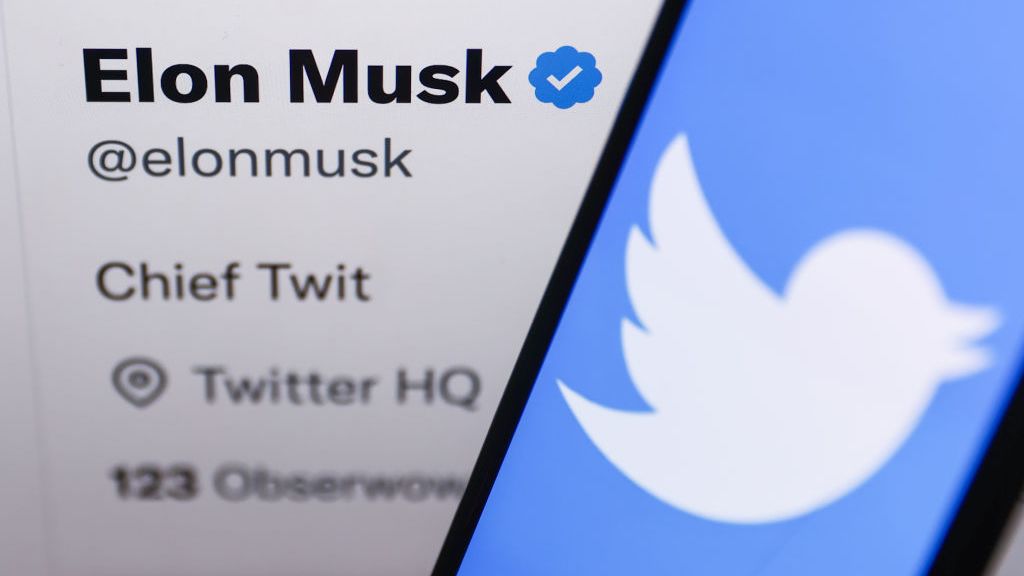Why do people tolerate Twitter frailties?
Twitter’s service performance levels seem to attract less criticism that most. But why is that, wonders Simon Brew?

Twitter itself explained its latest downtime in a blog post. It wrote that "we have uncovered unexpected deeper issues and have even caused inadvertent downtime as a result of our attempts to make changes. Ultimately, the changes that we are making now will make Twitter much more reliable in the future. However, we certainly are not happy about the disruptions that we have faced and even caused this week and understand how they negatively impact our users."
So why do people put up with it? The fact that it's free hasn't stopped complaints about Facebook and the like, after all.
Well, maybe it's because Twitter, for better or worse, treats people equally. After all, when the service goes down, it takes everyone with it. When it's overcrowded, everyone gets sluggish response times. And when there are double posts after a botched upgrade, there's a modicum of frustration, yet Twitter still seems to get a pass. Even during the notorious problems it suffered during the summer months of 2009, when Twitter's instability was a common theme, it attracted far less criticism back then, and is almost seen as one of the quirks of using the service in the first place.
Changing times
However, is that always going to be the case? Because as Twitter rightly notes, its userbase is growing, and the amount of traffic that goes through Twitter has been growing at a staggering rate.
But it's not just a numbers game, for the way people are using Twitter has changed. In the early days, the service attracted criticism for the mind-numbing nature of many of the updates that were Tweeted. That can still be levied in many cases, of course, but more and more businesses have successfully used Twitter, and are becoming increasingly reliant on it.
Sign up today and you will receive a free copy of our Future Focus 2025 report - the leading guidance on AI, cybersecurity and other IT challenges as per 700+ senior executives
-
 Cyber resilience in the UK: learning to take the punches
Cyber resilience in the UK: learning to take the punchesColumn UK law now puts resilience at the centre of cybersecurity strategies – but is legislation simply catching up with enterprise understanding that resilience is more than just an IT issue?
-
 CISPE claims European Commission gave Broadcom a ‘blank cheque to raise prices, lock-in, and squeeze customers’ with VMware deal
CISPE claims European Commission gave Broadcom a ‘blank cheque to raise prices, lock-in, and squeeze customers’ with VMware dealNews Cloud providers have issued a formal response to the General Court of the European Union after the Commission defended its approval of the deal
-
 Who owns the data used to train AI?
Who owns the data used to train AI?Analysis Elon Musk says he owns it – but Twitter’s terms and conditions suggest otherwise
-
 Elon Musk confirms Twitter CEO resignation, allegations of investor influence raised
Elon Musk confirms Twitter CEO resignation, allegations of investor influence raisedNews Questions have surfaced over whether Musk hid the true reason why he was being ousted as Twitter CEO behind a poll in which the majority of users voted for his resignation
-
 Businesses to receive unique Twitter verification badge in platform overhaul
Businesses to receive unique Twitter verification badge in platform overhaulNews There will be new verification systems for businesses, governments, and individuals - each receiving differently coloured checkmarks
-
 Ex-Twitter tech lead says platform's infrastructure can sustain engineering layoffs
Ex-Twitter tech lead says platform's infrastructure can sustain engineering layoffsNews Barring major changes the platform contains the automated systems to keep it afloat, but cuts could weaken failsafes further
-
 ‘Hardcore’ Musk decimates Twitter staff benefits, mandates weekly code reviews
‘Hardcore’ Musk decimates Twitter staff benefits, mandates weekly code reviewsNews The new plans from the CEO have been revealed through a series of leaked internal memos
-
 Twitter could charge $20 a month for 'blue tick' verification, following Musk takeover
Twitter could charge $20 a month for 'blue tick' verification, following Musk takeoverNews Developers have allegedly been given just seven days to implement the changes or face being fired
-
 Twitter reports largest ever period for data requests in new transparency report
Twitter reports largest ever period for data requests in new transparency reportNews The company pointed to the success of its moderation systems despite increasing reports, as governments increasingly targeted verified journalists and news sources
-
 IT Pro News In Review: Cyber attack at Ikea, Meta ordered to sell Giphy, new Twitter CEO
IT Pro News In Review: Cyber attack at Ikea, Meta ordered to sell Giphy, new Twitter CEOVideo Catch up on the biggest headlines of the week in just two minutes